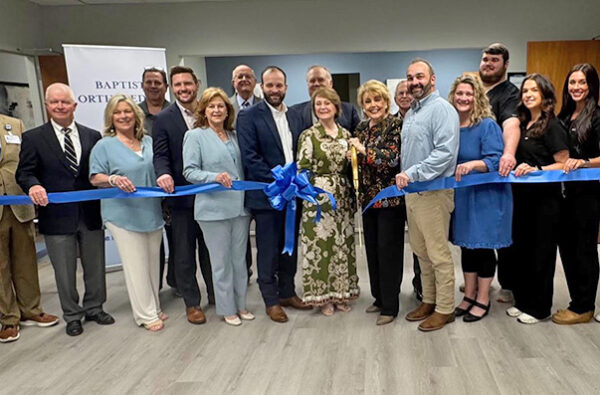Achieving high patient satisfaction scores is especially prudent when patients are also friends, family and neighbors—as is the case at Baptist Booneville.
“Because we are in a small community, we focus heavily on our patients and help them take care of themselves following discharge,” said Baptist Booneville Director of Quality and Accreditation Linda Chaffin. The staff set a goal of being at the 80th percentile in all nine HCAHPS scores after finishing fiscal year 2016 zero out of nine. Since then, they have worked several KATA boards focused on specific Press Ganey questions, such as discharge teaching, pain control education and medication teaching.
“We have made phenomenal progress,” said Chief Nursing Officer Tracy Roos. “Our overall goal was to be 80 percent for nine out of nine. We are seven of nine now. Our nursing staff, respiratory therapy, pharmacy, physical therapy, leadership team and case managers all played a role. The frontline staff is leading the way. I am in awe of how we are moving the numbers. There are more areas to conquer, but we will achieve our goal.”
Case managers focused on care transition. “We began with satisfaction scores at 6 percent, and we now are at 59 percent,” said Case Manager Tiffany Burress. Some of the challenges and solutions were:
- Discharged patients not understanding questions and/or terminology on patient satisfaction surveys. “We now use key words from the survey in discharge planning so they are familiar to the patients,” said Burress. “We also have a form containing these words that goes home with patients.”
- Discharged patients not understanding the importance of returning the surveys (and thus not doing so at the rate the team desired). “We began reminding patients at admittance and discharge they would receive a survey and why it is important to return it completed.”
Raising scores was just one area of focus for the case managers. Other KATA boards included:
- Length of stay. They began fiscal year 2016 at below minimum and finished the year at minimum, but, “We saw a huge improvement,” said Tiffany. “We reinforced with our physicians the importance of discharging patients within the diagnosis-related group (DRG) time. We also started our Project 24 and encouraged all disciplines to get tests done prior to discharge.” Result: Starting fiscal year 2017, the staff has been at challenge each month.
- Readmission. “We began with a quality score of minimum for heart failure and chronic obstructive pulmonary disease (COPD),” said Tiffany. She and fellow case manager Brittany Alexander thoroughly examined the previous year’s readmissions and then took a stronger role with physicians. If they noticed a patient was a readmission, they talked to the physicians about outpatient treatment or placing the patient in observation until the patient could be better assessed. Result: “We are now at challenge .50, and we began at minimum.”
“As we accomplish one goal, we add another,” said Linda. “For example, we raised enrollment in MyChart from 9 percent to 43 percent. We are now working a KATA on upfront collections. KATA is valuable because we can do experiments and adjust our plan as we go along. It’s more than numbers; it’s about meeting our patients’ needs.”






